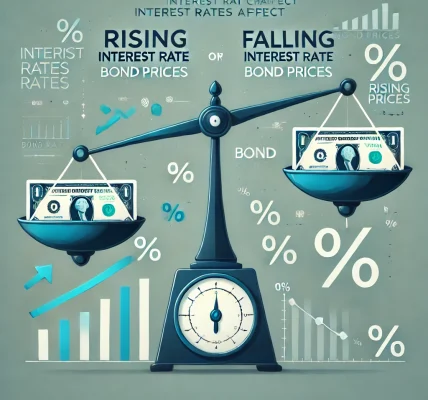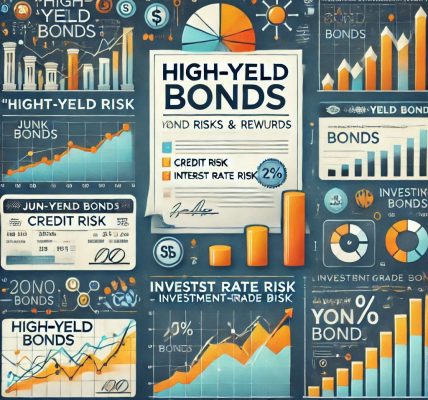Investing in bonds is an excellent way to generate passive income while managing risk. However, not all bonds are created equal. One of the most crucial factors investors should consider when selecting bonds is their bond rating. Bond ratings help investors assess the creditworthiness of bond issuers and determine the likelihood of receiving interest payments and the return of principal upon maturity.
In this article, we will explore bond ratings in detail, discuss how they are assigned, and explain what they mean for investors. By the end, you’ll have a clear understanding of how to use bond ratings to make informed investment decisions.
What Are Bond Ratings?
Bond ratings are grades assigned to bonds by credit rating agencies to assess the credit risk of the issuer. These ratings indicate the likelihood of the issuer repaying its debt obligations, including both interest payments and principal repayment.
Higher-rated bonds are considered safer investments with lower yields, while lower-rated bonds carry higher risks but may offer higher returns.
Who Assigns Bond Ratings?
Several globally recognized credit rating agencies evaluate and assign ratings to bonds. The three major agencies include:
- Moody’s Investors Service
- Standard & Poor’s (S&P) Global Ratings
- Fitch Ratings
These agencies use their own methodologies and criteria to determine bond ratings, but their rating scales are similar.
Bond Rating Scales and Categories
Bond ratings are divided into two main categories:
1. Investment-Grade Bonds (Lower Risk, Lower Yield)
These bonds are issued by financially strong entities and are considered low-risk investments. They offer lower interest rates but provide stability and security.
- Moody’s: Aaa, Aa1, Aa2, Aa3, A1, A2, A3, Baa1, Baa2, Baa3
- S&P and Fitch: AAA, AA+, AA, AA-, A+, A, A-, BBB+, BBB, BBB-
2. Non-Investment Grade (Junk) Bonds (Higher Risk, Higher Yield)
These bonds carry a higher risk of default but offer higher potential returns to compensate for the risk. They are also known as high-yield bonds.
- Moody’s: Ba1, Ba2, Ba3, B1, B2, B3, Caa, Ca, C
- S&P and Fitch: BB+, BB, BB-, B+, B, B-, CCC, CC, C, D (default)
What Bond Ratings Mean for Investors
1. AAA (Highest Quality, Lowest Risk)
These bonds have the highest credit rating, meaning they are issued by financially stable governments or corporations with a near-zero chance of default. Examples include U.S. Treasury bonds.
Best for: Conservative investors seeking security and stability.
2. AA to BBB (Investment Grade, Low to Moderate Risk)
Bonds rated AA to BBB are considered safe but may have slightly higher risks compared to AAA bonds. They are often issued by blue-chip corporations and stable governments.
Best for: Investors who want a balance of safety and returns.
3. BB to C (High-Yield or Junk Bonds, Higher Risk)
These bonds are riskier as the issuers may have weaker financial stability. However, they offer higher interest rates to attract investors.
Best for: Investors who can tolerate higher risks for better returns.
4. D (Default)
Bonds rated D are either in default or at high risk of default. Investing in these bonds is highly speculative.
Best for: Only for experienced investors willing to take extreme risks.
Why Bond Ratings Matter to Investors
1. Risk Assessment
Bond ratings help investors evaluate the default risk of an issuer before making an investment.
2. Return Expectations
Higher-rated bonds offer lower returns but greater safety, while lower-rated bonds offer higher returns with increased risk.
3. Portfolio Diversification
Investors can balance their portfolio by mixing investment-grade and high-yield bonds to achieve both security and returns.
4. Liquidity Considerations
Higher-rated bonds are easier to buy and sell in the market due to greater demand, while lower-rated bonds may have lower liquidity.
How to Use Bond Ratings in Your Investment Strategy
1. Align Ratings with Your Risk Tolerance
- If you are risk-averse, focus on AAA to A-rated bonds.
- If you seek higher returns and can handle volatility, consider BB-rated or high-yield bonds.
2. Diversify Your Bond Investments
A well-diversified bond portfolio should include a mix of different ratings to balance risk and returns.
3. Consider Bond Ratings with Other Factors
Do not rely solely on ratings. Check the issuer’s financial health, economic conditions, and interest rate trends before investing.
4. Stay Updated on Rating Changes
Bond ratings can change due to shifts in an issuer’s financial position. Regularly monitor updates from rating agencies to avoid unexpected risks.
Limitations of Bond Ratings
While bond ratings are essential tools for investors, they have limitations:
- They are not foolproof – Even highly rated bonds can be downgraded if economic conditions worsen.
- They do not predict market fluctuations – Bond prices can still fluctuate based on interest rate changes and investor sentiment.
- They may have biases – Some rating agencies have been criticized for failing to foresee financial crises.
Conclusion
Bond ratings play a vital role in helping investors make informed decisions about risk and return. By understanding the different rating categories and their implications, investors can build a bond portfolio that aligns with their financial goals.
For conservative investors, AAA and AA-rated bonds provide security, while those seeking higher returns may explore BB-rated or junk bonds with caution. Regardless of your strategy, diversifying across different ratings and staying informed about rating changes can enhance your investment success.



